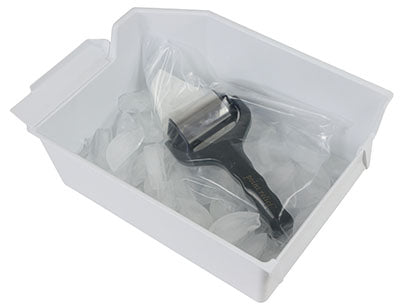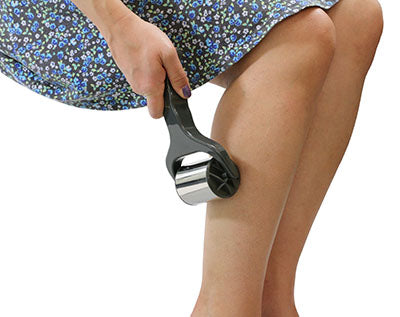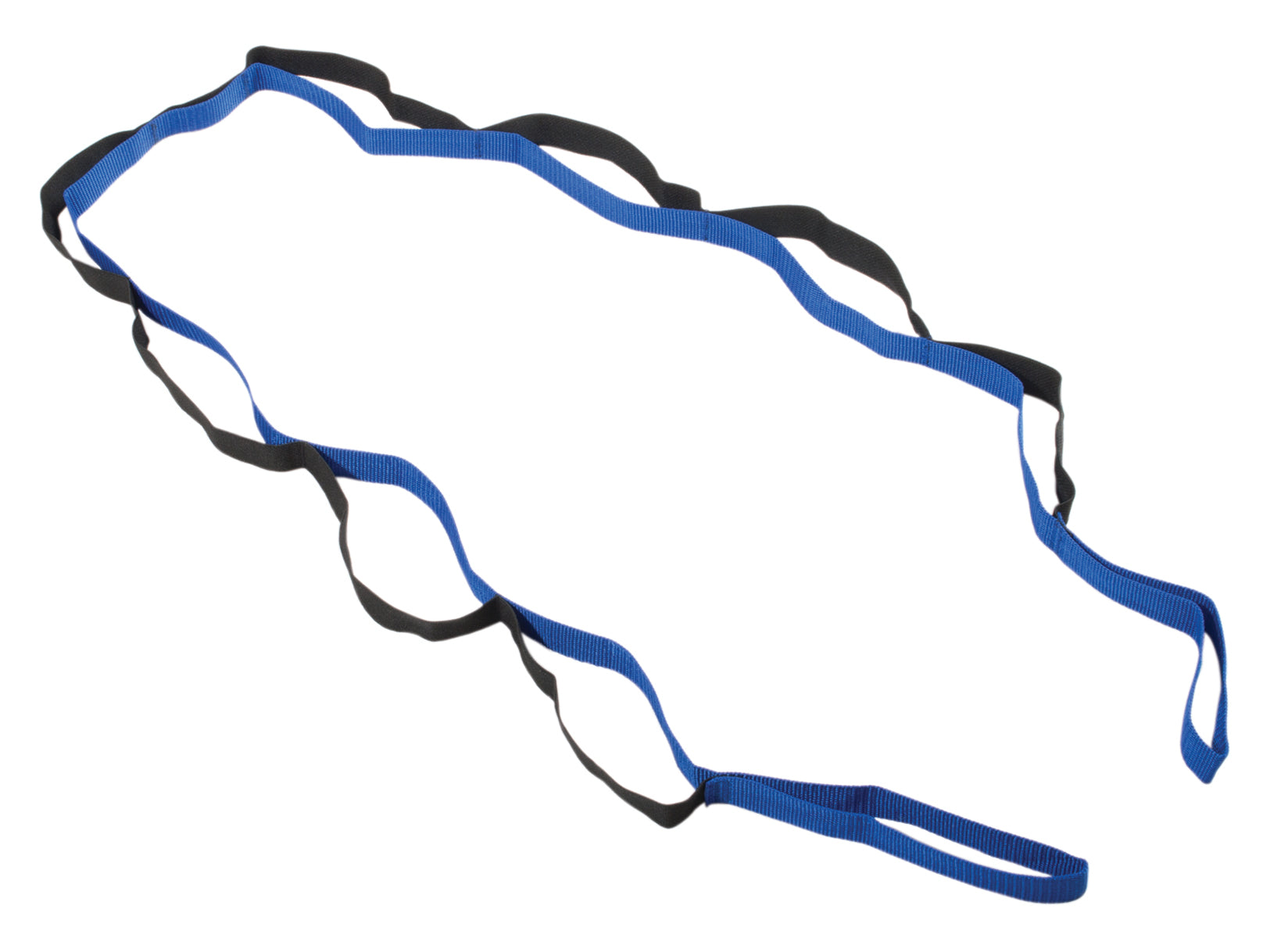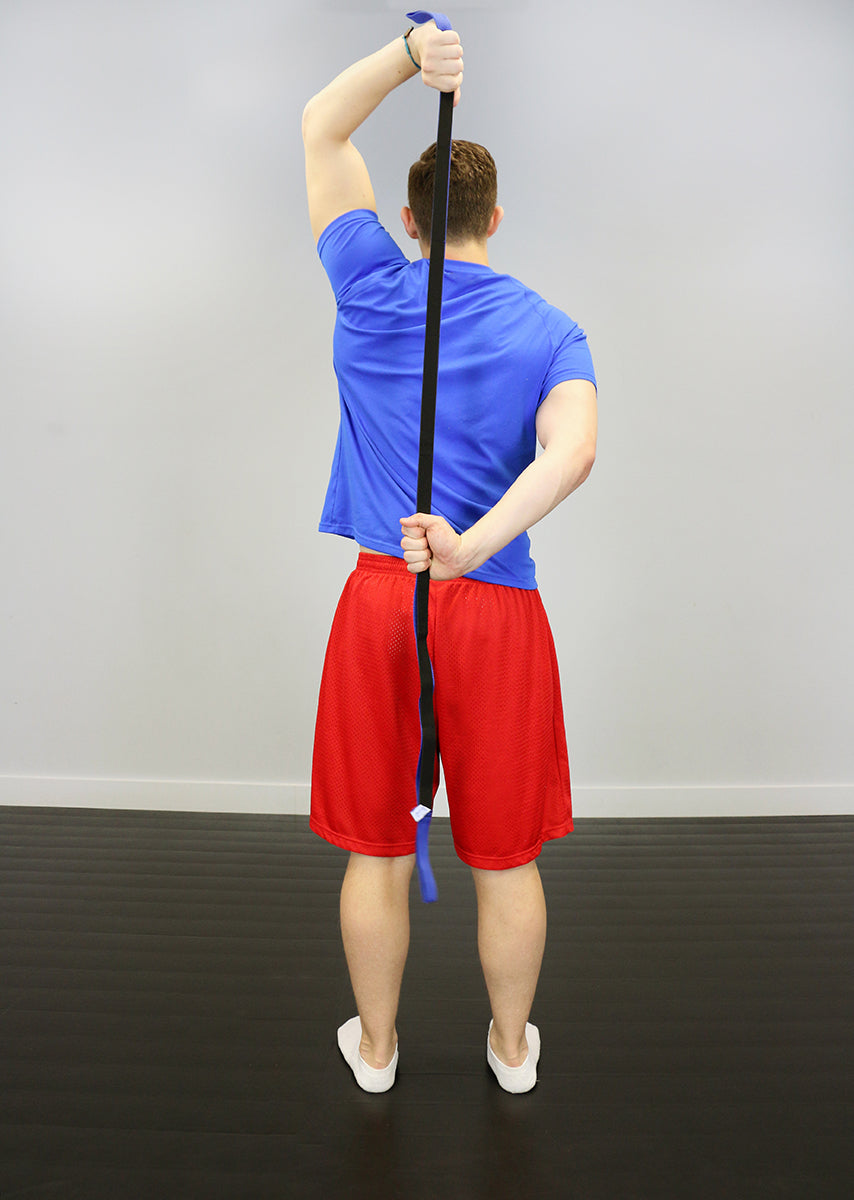Pain in the front of the knee is becoming an epidemic among serious lifters and fitness enthusiasts alike. It once was one of those injuries we associated mostly with females and blamed on their alignment but no longer. I see almost as many men now with diagnoses like patellar maltracking, patellar tendonitis, IT band syndrome, and just general “anterior knee pain.” There are multiple factors at play here that interact with one another to eventually cause pain and limit performance. Male or female, the causes can be traced back to poor joint mobility, tight and overactive muscle groups dominating stretched and weak muscles, synergistic dominance, and just plain sitting too much. In this article, I will explore them all. There are a number of common causes of anterior knee pain, but some are more directly related to weightlifting. 1)
Increased compression forces at the patello-femoral joint. Compressive forces are greatest at 90 plus degrees of flexion, especially open chain. This is one reason I recommend to my patients and athletes to stay off the leg extension machine. It is unbelievable how many people come in to rehab and specifically name that machine. Unless you are bodybuilding, you don’t need it. If you are, you may want to think about limiting the range of motion. Performing squats with a wider than normal stance and high bar position has also been shown to increase compressive forces. The thought is that the trunk is in a more upright position, which increases quad contribution (while decreasing the load on the glutes) and creates more compression. I know not everyone is just going to change their stance and bar position tomorrow, but if you have knee pain, give it a shot. For those of you who use a Smith machine to squat, I would think twice just for this reason. Besides, nobody really moves or lifts like that in real life. 2)
Increased stress on the patellar tendon as the knees go past the toes. There are times in life and in the weight room where the knee will make its way out past the toes, especially with squats and lunges. If the heels are down and hips are contributing properly, there’s no problem. Once the heels come off the floor, you can kiss any glute contribution good-bye. It’s all quad from there on out, which means greater stress on the patellar tendon and those nasty compressive forces again as well. 3)
Increased knee valgus angle. Once thought to be limited to females with wide hips, it’s surprising the number of men who now demonstrate this pattern. It may not show up until they squat heavy, but that just tells me they’ve got strong quads and they’re lacking elsewhere. It’s fairly common to see numbers 2 and 3 together because once the heels come up, the knees buckle in. This valgus angulation at the knee is often what is behind the patellar maltracking issue. The patella is supposed to glide friction-free with knee extension-flexion. When the knees cave inward, the patella will track laterally and come into contact with the femur. The result is a roughing up of the cartilage under the patella, which will become painful in time. This is a very common problem in the sedentary population when going up and down stairs, lifting, or trying to kneel down. For weightlifters, it’s squats and lunges. So why do these things happen? All three of these issues (increased compressive forces with greater knee flexion angle, shearing forces as knees go over toes, and knees going into valgus) probably happen hundreds or thousands of times per day as we go through our normal daily activities. The key is limiting the amount of force and excessive movement in these directions during training and athletics. To do those things, we must first look at what structures, when not functioning properly, can get us into trouble. 1)
Soft tissue restrictions: The hip flexor muscles and TFL are frequently short and overactive. The problem is they are in opposition to the glutes, which can then be inhibited (I’ll be ranting more about the importance of the glutes and knee control later). Anterior/lateral knee pain can also be caused by trigger points in the glute medius and maximus pulling on the IT band. The IT band transmits forces from the glutes to the patellar tendon. 2)
Restricted ankle dorsiflexion: This one is often overlooked, but it can cause an anterior weight shift during squatting and lunging activities, resulting in the knees over the toes and valgus positions. To check ankle mobility, start in a half kneeling position with the ankle in a neutral position (roll the ankle in and out and then try to estimate the “middle”). Bring the knee out over the foot as far as possible. Use a stick to draw a line from the knee to the floor. The knee should be at least four inches past the foot without the heel coming up or the foot rolling in. 3)
Poor glute function: The glute complex is responsible for hip extension, abduction, and external rotation. When functioning in the closed chain, as with squatting, they resist femoral adduction and internal rotation (knee valgus) and decrease anterior shear forces on the knee (Ireland et al 2003 and Bolgla et al 2008). 4)
Poor trunk control: Lack of control through the trunk will increase forces at the anterior knee during squatting, lunges, and deadlifts. Excessive lumbar lordosis (partially the result of weak glutes) will limit the ability to sit back into the squat, thus creating an anterior weight shift and quad dominant movement. It will also increase the possibility of back pain. So how are we going to solve the problem of anterior knee pain? 1) Foam roll the hip flexor group and TFL to inhibit tone and allow for a better stretch to these overactive muscles. Be sure to roll glute max and medius to reduce stress on the IT band. 2) Improve ankle dorsiflexion through mobilization and mobility work. My favorite technique is from Brian Mulligan who uses mobilization with movement to free up the ankle. If you know a therapist or trainer versed in this technique, it can help to alleviate symptoms quickly. To work mobility, assume the test position that I discussed earlier. Place the stick just inside the knee, but it should be touching the floor next to the fifth toe. Glide the knee forward, keeping it outside the stick. This keeps the ankle supinated as you attempt to gain dorsiflexion. Do not allow the heel to leave the floor.

3) Work hip extension. Poor glute function does not necessarily mean poor glute strength. It can be a matter of the lifter using a quad dominant strategy over a glute dominant strategy. In a quad dominant squat, the lifter begins the movement by flexing the knees instead of the hips. It’s more of a straight down descent instead of sitting back and then down. This movement pattern automatically recruits more quad and leaves out the strong, powerful hip muscles. Not only will this increase knee stress, but it also results in less than optimal squat numbers. The ability to sit back first depends on the ability of the glute maximus to eccentrically control the hip. If you can sit back simply by thinking about it or by warming up with some light box squats, you have a patterning issue rather than a strength issue. If you can’t sit back effectively without feeling like you will fall over, you have a strength issue. Bridge variations are a great way to learn to recruit the glutes and build strength. Start with both heels pressing into the floor and lift the hips until a straight line could be drawn from your shoulder through the hips and to the knees. The hamstrings should be doing very little to assist. If you can feel them tightening or cramping, you are substituting hamstrings for glutes. This is known as synergistic dominance, but that is for another article. Just pre-contract the glutes before lifting and make sure to press through the heels. Progress to single leg bridging.

Don’t forget about deadlifts and/or single leg deadlifts. These are great exercises for overall hip development. 4) Activate/strengthen the outer hip. The glute complex and some of the smaller hip external rotator muscles play a crucial part in maintaining knee alignment. Knee valgus and patellar maltracking are not caused by a weak VMO as we once thought. It is actually the inability of these hip muscles to prevent adduction and internal rotation of the femur. The knees should be aligned with the mid to outer foot during squats and lunges for proper tracking of the patella. The question comes up again—is it poor muscle activation/patterning? Or is it weakness? If I have an athlete who can’t break parallel with good form performing a body weight squat, I will apply pressure to the outside of the knees pressing inward. The athlete is instructed to squat and press the knees out as hard as he or she can. Many times, athletes will recruit the hip musculature enough that they drop right down into a full squat with perfect technique. If this is the case, they have the strength to do it but are not activating the hip muscles appropriately.


Strengthening the hip abductors and external rotators can be done several ways, but they must be done correctly because trunk substitutions can take over the movement. The first two exercises should be used with someone who can’t squat even with the activation technique described above. They can progress to exercises three and four once the first two are mastered. The athlete who can squat with the activation technique can start with exercises three and four as part of the warm up.
- Clamshells are a very basic exercise designed to target the external rotators of the hip in an isolated fashion. From a side lying position with the hips and knees bent, lift the top knee. The feet stay stacked. Be sure to keep the trunk stable and resist rolling back as the knee comes up. Add band or tubing resistance around the knees to progress the exercise.
- Side lying hip abduction is another very basic exercise but requires strict technique. The top leg should be slightly extended at the hip and in a neutral to slightly externally rotated position. When lifting the leg, be sure the hip is initiating the movement and not the trunk.
- Lateral band walks are done with a band or tubing around the knees for beginners and progressed to the ankles for a greater challenge. The athlete will abduct the lead leg and then eccentrically control the back leg as it adducts back in (effectively working the abductors on both legs simultaneously). Watch for trunk compensation here as the QL can laterally flex the trunk to throw the hip into abduction. Perform one set right and left standing relatively straight and the second set in a quarter to half squat position.

- Squats with tubing around the knees use a reactive neuromuscular training technique designed to activate the hip musculature and prevent valgus collapse at the knees. Much like the test I described above, use a good amount of resistance and attempt to push the knees out while squatting down. Use this during your warm-up sets.
For the athletes out there, I can’t stress enough the importance of performing single leg squats. When on one leg, the hip muscles are working harder to maintain proper lower extremity alignment. Single leg squats will not only maximize protection at the knee joints but are also great for speed and power. Don’t worry, I won’t get on my single leg training soapbox here. 5) Don’t forget to train for core stability. Core stability exercises such as prone and side planks, bird dogs, and fire hydrants, work the trunk muscles by resisting excessive motion through the spine while simultaneously getting in some extra hip work. On the other hand, core strengthening involves motion through the spine. Crunches, leg lifts, and back hypers are examples of strengthening exercises. Squats, deadlifts, and lunges require a rigid, stable spine to protect the knees, put up big numbers, and effectively carryover to sports. So there you have it—the common causes of anterior knee pain with lifting and strategies to correct your weaknesses. Take a close look at what exercises or activities are causing pain and where the knees are aligned when it happens. Ask a trainer or your lifting partner to check alignment and look for technique flaws when going heavy. Work these five corrective strategies into your workouts to keep those knees healthy and the personal records coming.
References 1. Ireland ML, Willson JD, Ballantyne BT, Davis IM (2003) Hip Strength in Females with and without Patellofemoral Pain. J Orthop Sports Phys Ther 33:671–76. 2. Bolgla LA, Malone TR, Umberger BR, Uhl TL (2003) Hip Strength and Hip and Knee Kinematics during Stair Descent in Females with and without Patellofemoral Pain Syndrome. J Orthop Sports Phys Ther 38:12–8.









































































